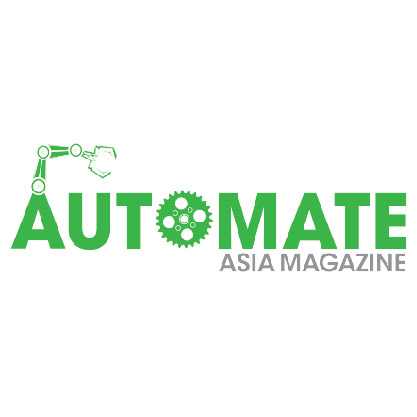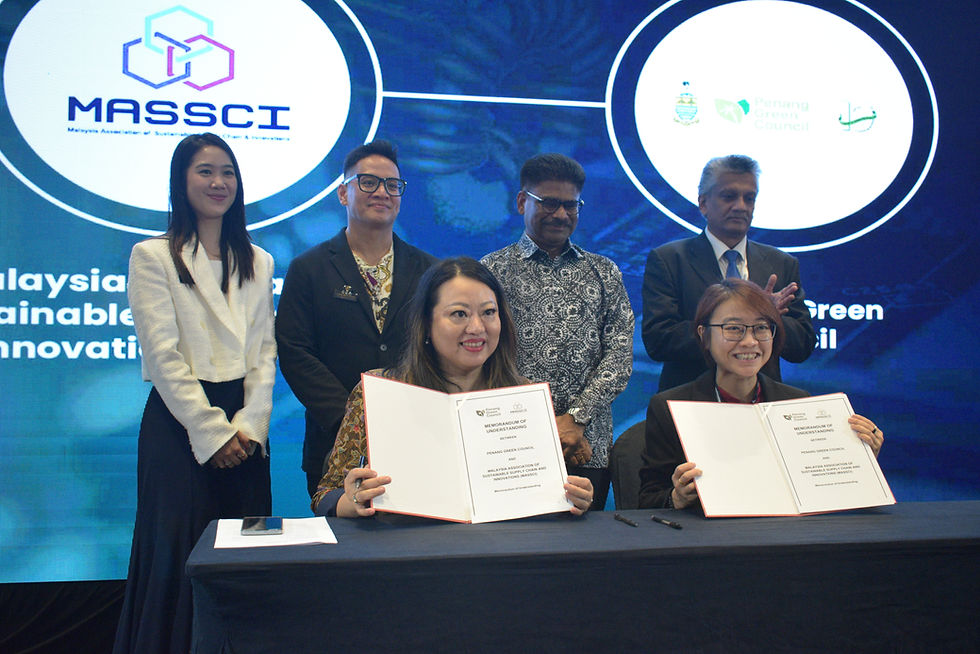Schneider Electric: The Powerhouse for IoT
- Automate Asia Magazine

- Dec 15, 2020
- 6 min read
Updated: Feb 1, 2021

Astri Ramayanti Dharmawan is the Country General Manager of Schneider Electric Malaysia, who is responsible to support the company’s growth both in Malaysia and Brunei. She is leading the team to better manage and integrate their energy distribution and automation processes in ways that make energy safe, reliable, efficient, and sustainable. Prior to joining Schneider Electric Malaysia, Astri Ramayanti was the Vice President for Secure Power Business, Indonesia, Malaysia, and Brunei in Schneider Electric. She managed the entire Secure Power Business that Schneider Electric is involved in, including solutions and products for data center physical infrastructures such as power & cooling, software, IT consulting services, and services. Astri is also driving forth Schneider Electric’s commitment to Innovation, Diversity, and Sustainability. She firmly believes that the company’s achievements in driving diversity and inclusion through equal opportunities to its employees and staff is a key attribute in driving innovation and high performance in the company. Graduated from Universitas Indonesia, Astri holds a Bachelor’s degree in Metallurgical Engineering and a Master of Business Administration (MBA).
1. Schneider Electric’s main business focuses on software, critical power, and smart grid applications. What is Schneider’s forte compare to similar market players?
At Schneider Electric, we empower all to make the most of their energy and resources, bridging progress, and sustainability for all. Our mission is to be our customers’ digital partner for sustainability and efficiency. We drive digital transformation by integrating world-leading processes and energy technologies, end-point to cloud connecting products, controls, software, and services, across the entire lifecycle, enabling integrated company management, for homes, buildings, data centers, infrastructure, and industries. We are the most local of global companies.
We are advocates of open standards and partnership ecosystems that are passionate about our shared values: meaningful, inclusive, and empowered. The systems we offer are Internet of Things (IoT) enabled, open, and intra interoperable and are designed to help achieve efficiency. We are highly committed to innovation such that a fraction of our revenue goes to research and development every year. We have a strong global ecosystem with a local presence around the world and a strong network of partners and system integrators. 50% of our global revenue in 2019 comes from digitalization where we provide both hardware and software required such as connected products, edge controls, analytics, software, services, Artificial Intelligence (AI), and more.

2. Based on your view, how can tech leaders in Southeast Asia execute the use of the Internet of Things (IoT) to address the industries’ dire needs and solve the problems in this current pandemic?
From our observation, companies have accelerated their digitalization strategy in the last 10 months as compared to before where it will take up to a few years. The digital age has redefined the way companies operate and do business. Nowadays, you can see businesses pivot and leverage e-commerce platforms and virtual events to remain relevant to their audience and retain their competitive edge. With the on-going pandemic, we know our customers are increasingly seeking solutions that enable them to perform remote monitoring, real-time collaboration, and predictive technology to increase efficiency and ultimately ensure business continuity.
On the industrial end, Schneider Electric is bringing together leading IT and Operational Technology (OT) manufacturers, industrial system integrators, and IT solution providers to build integrated solutions. The convergence of IT and OT requires instrumenting machines and integrating operational, production, and supply chain systems to bring more intelligence to the entire environment. For example, all machines in an industrial or manufacturing facility that generates data need to be controlled and managed effectively so that it brings value to the operations. The process starts when sensors collect data from the environment.
They feed data into the OT system that then digitizes them. These digitized data then crossed over to the IT side for processing before they head to the data centers. This is where Edge Computing, which performs more analysis, comes into play. With Edge Computing, industrial players essentially get more from Industrial IoT – speedier insights that enable them to make critical decisions promptly to solve issues or capture business opportunities.
3. IoT has aided the healthcare system during the peak of the COVID-19 outbreak. How does the application of IoT drive the economy and various industries to the next level of digital transformations?
It is important to reiterate the fact that digital transformation was taking place all around the world before COVID-19. What happened was simply a turbocharged acceleration of adoption during the pandemic. The healthcare sector is one of them which experienced this. According to a recent survey carried out by Tech Research Asia (TRA) commissioned by Schneider Electric, 48% of Asia Pacific healthcare organizations have adopted Edge Computing. This statistic proves that a healthy number of healthcare organizations are headed to what we are calling “the next level of digital transformation”.
Today, given the impact on the economy and especially across Asia, digitalization can provide much-needed relief to businesses, helping them maximize operational efficiency, gain market share, and manage processes remotely. With the application of IoT, businesses will be prepared to meet the demands resulting from the pandemic. For instance, previously if a facilities manager heard that a compressor did not sound quite right, he would go physically to check various dials and gauges to troubleshoot the problem.
We can digitize that now and use IoT to visualize those parts with optical cameras, microphones, vibration sensors, all sorts of devices that can save us footsteps. The digital tools also provide analytics that enables a far more proactive approach to maintenance than in the past. While the pandemic challenged many industries, there are a few that have been able to nimbly recalibrate their production and processes to meet changing needs. We have seen our customers in the business of food and beverage, pharmaceutical, machinery, water & wastewater, healthcare, and data centers weather the storm using tactical technologies to answer changing market demands.
4. How does IoT help the quality of life of society, especially the under-privileged during this outbreak of COVID-19? Could you share some insights on this?
We are already witnessing how IoT which connects everyday objects to the Internet or owned network—can help us transform our world for the better. At the community level, our products enhance the efficiency of critical industries, our expertise enables us to create reliable decentralized energy grids, and our IoT solutions bring critical infrastructure into the digital age – for example, EcoStruxure™ for Healthcare helps us connect and digitize hospitals, augmenting their ability to improve patient care.
Beyond that, advanced data analytics, IoT-enabled devices, and sensors are helping to reduce air pollution in some of our world’s biggest cities, improve agriculture and our food supply, and even detect and contain deadly viruses. The use of IoT will also contribute to the building of smart cities, cleaner air and water, smarter sustainable agriculture, and cutting food waste. All of which when achieved will result in better standards of living.
On the Corporate Social Responsibility end, the Schneider Electric Foundation launched the “Tomorrow Rising Fund” earlier this year to help vulnerable communities respond, recover, and become more resilient in wake of COVID-19. In Malaysia, we have donated RM48,375 (€10,000) and 45 refurbished laptops to Dignity for Children, which will provide children with access to technology and aid them in their online learning.

5. In your opinion, will IoT emerge as one of the top digital transformations in Southeast Asia’s industries?
Well, in my opinion, IoT is already a key digital transformation in Southeast Asia. But the people behind Schneider Electric are looking at ways to increase IoT’s capabilities even further. One of them would be Edge Computing that is poised to start a new trend in this part of the world.
6. What is Schneider’s growth strategies, say for the next 5 years in Southeast Asia?
In 2020, we learned new ways to live and work. As for Schneider Electric, we learned different ways to interact with our partners and customers. We are doing things differently through empowerment and leveraging technology. Over the next few years, we are set to continue to focus on providing energy and automation digital solutions for efficiency and sustainability. In brief, Schneider Electric’s key pillars for strategic growth are Digital, software, services, and resilient segments.
7. Could you share with us your advice towards the industry players in Southeast Asia that wish to venture into IoT?
Choose an IoT solution that can help your company to reshape, adapt, and transform your business to scale and accelerate growth. Here are some tips and key learnings that I have observed over the years which might be of use to others.
Organizational and cultural change is often underestimated – change of mindset takes time and people with the right expertise
IoT projects might take longer than anticipated – always include a buffer in your timeline and review it as things progress
Necessary skills are not available inhouse – upskilling is important. Try to work with the talent you have first before reaching to external sources.
Security is often an afterthought – never deprioritize this just to get the first product out quickly.
Interconnectivity issues are a major complexity driver – it is never a straightforward task when you need to get complex software to speak to each other. Always think through the details and gaps in the system.
Scalability becomes an issue when deploying to a large number of devices – when numbers are too big, the hardware could become an issue usually because they are not powerful enough, data models too slow, or legacy equipment that needs upgrading too.






%20(1).png)


